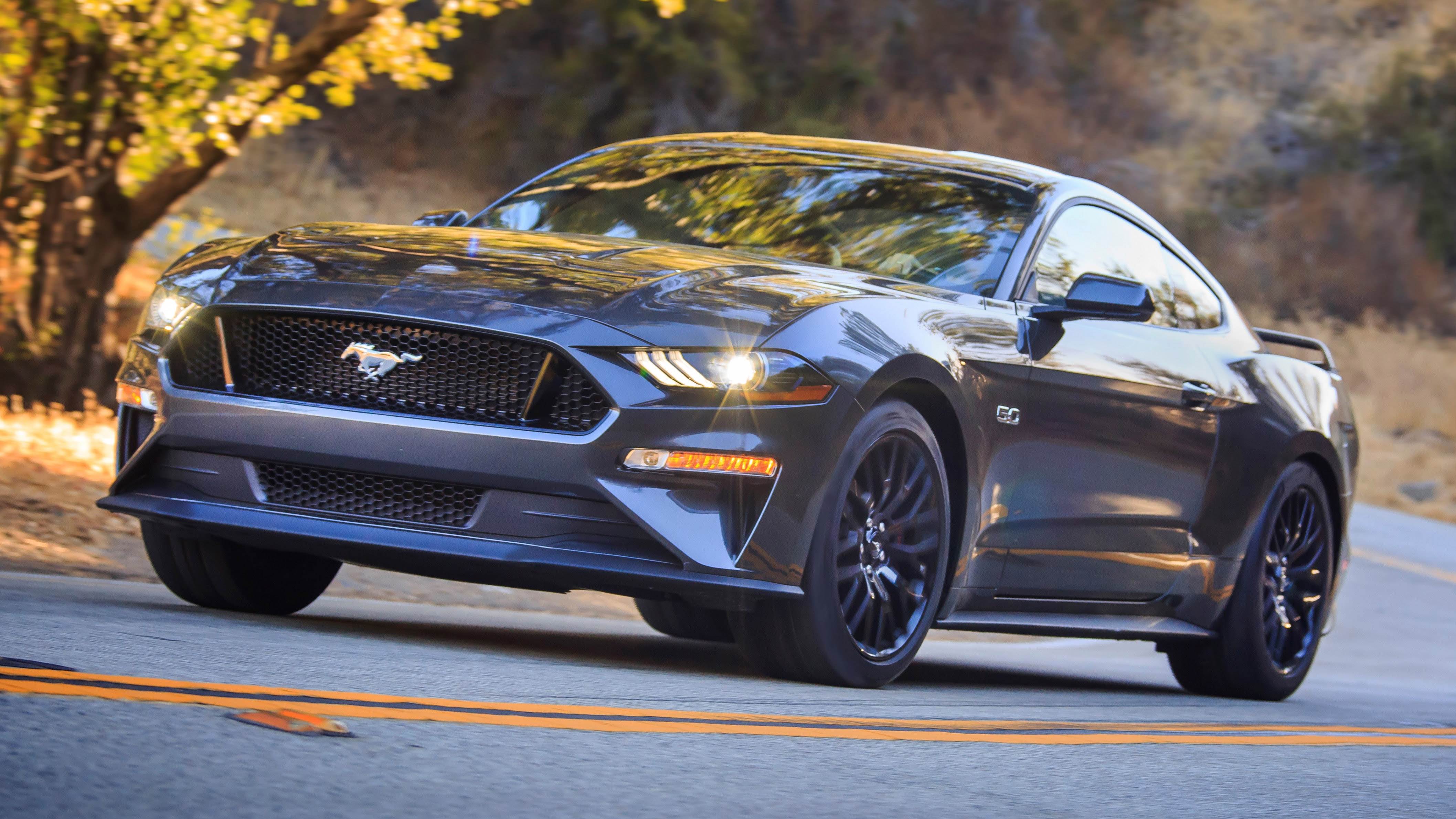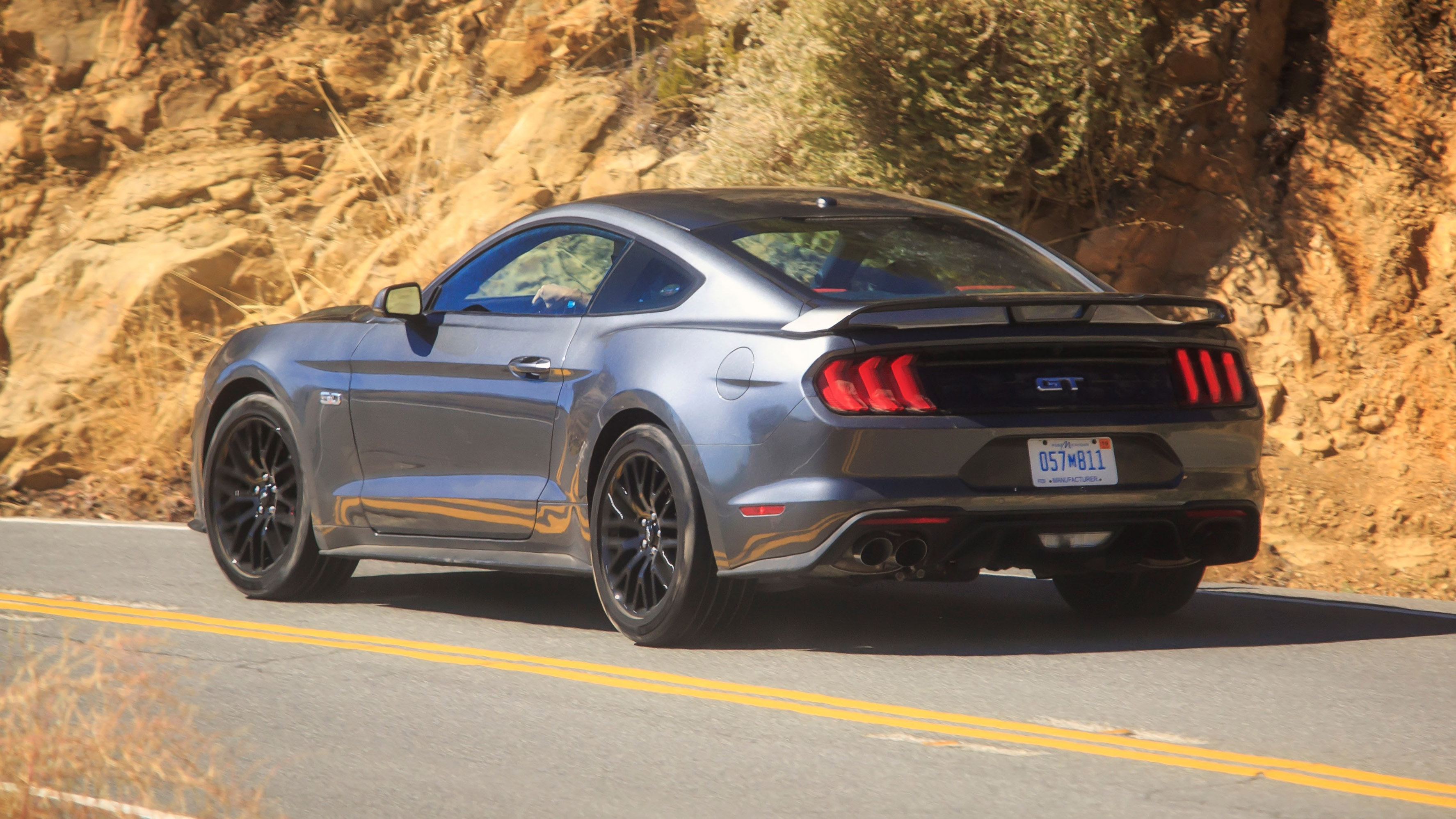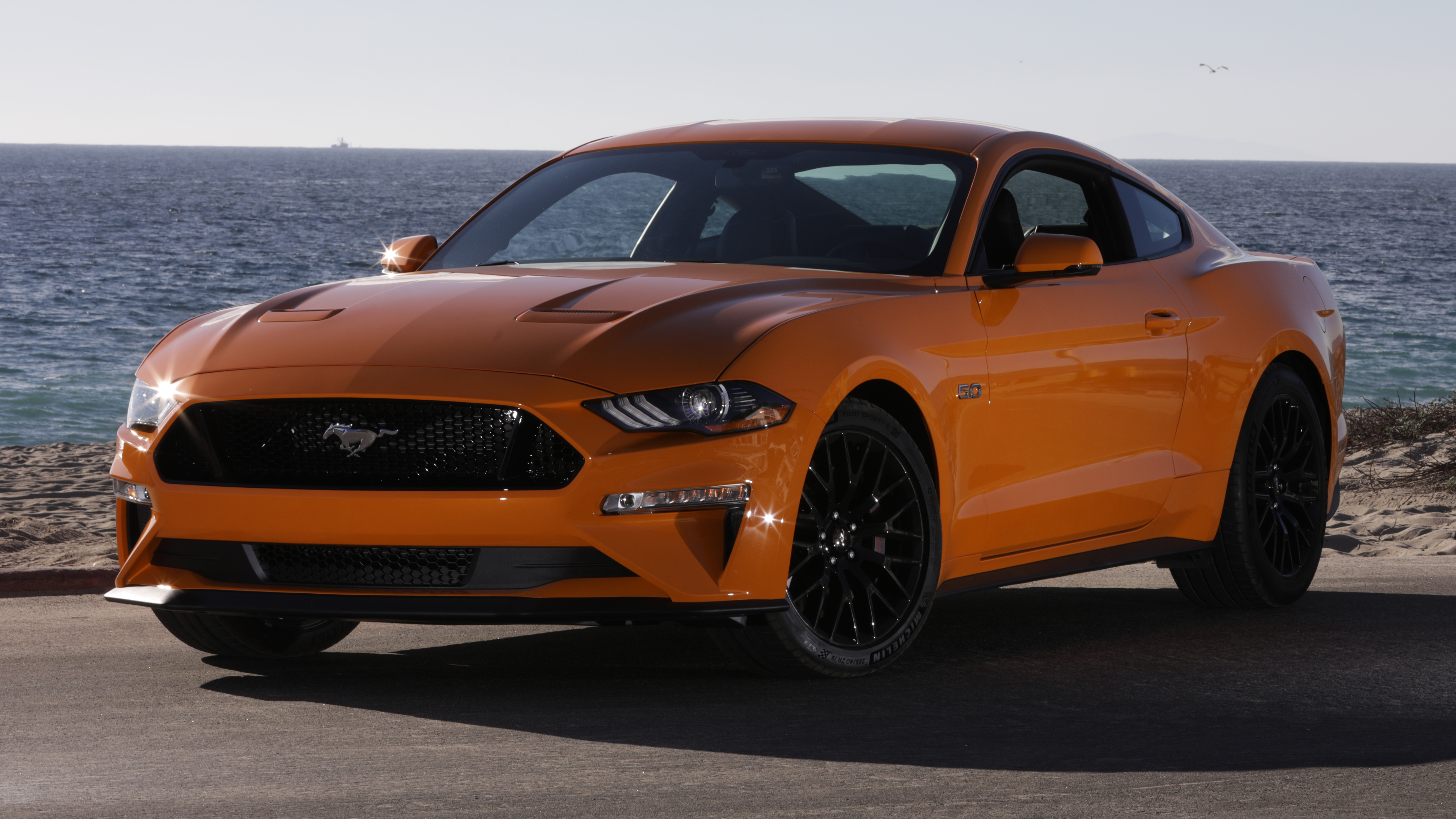
SPEC HIGHLIGHTS
- BHP
450bhp
- CO2
297g/km
- Insurance
group45E
What is it?
This is, of course, the 2018 Ford Mustang. The Blue Oval pony car which can trace its roots all the way back to 1964. Yes, it looks a lot like the existing car. But the subtle exterior changes hide a broad range of useful and performance-enhancing detail changes beneath that Detroit-designed skin. And the good news is they will be installed on all Mustangs sold around the world, not just in the US. So even our precious little island will get them all.
What should we expect, then?
Let’s start with the drivetrains. The 5.0-litre V8 now has 460bhp – 25bhp and 20lb ft more than the ’17 model – and a cheeky 5bhp more than the V8 Camaro. The 2.3-litre four gets another 30lb ft of torque with the same max power of 310bhp. Both cars can now be had with ten-speed autos – a version of the gearbox fitted in the Raptor – or a six-speed manual. Ford said it has looked at including auto rev matching on the six-speeder, but decided against it this time.
What about the chassis?
This has been upgraded across the board. All models now have revised shocks for a better ride quality, plus stiffer rear suspension and stabiliser bars to sharpen steering response and handling accuracy. There is now optional Magneride active suspension – as fitted to the Shelby GT350 – when you spec the Performance Pack.
Performance Pack?
Yes, the level one version includes retuned chassis systems – ABS, stability control and electric steering – plus bigger, six-piston Brembo brakes and rotors, a K brace, bigger radiator, Torsen limited slip diff and Michelin Pilot Sport 4 S tyres. There is a level two version coming in a couple of months, which features all the above plus wider wheels shod with Michelin Cup 2s, modest front and rear aero and the active suspension. Ford claims the level 2 car is a couple of seconds a lap faster than the Level 1, despite having exactly the same power, so that’s worth having. If you are prepared to add the $6,500 it costs to your Stang’s final price.
Will that be a competitor to the Camaro SS ILE?
You’d think so, but Ford says no. They prefer to think of it as a stepping stone between the Mustang GT and the Shelby GT350. We beg to differ – both have similar output V8s, active suspension and, well, that’s enough isn’t it? – and will be looking to put the pair of them back to back as quickly as possible.
Top Gear
Newsletter
Thank you for subscribing to our newsletter. Look out for your regular round-up of news, reviews and offers in your inbox.
Get all the latest news, reviews and exclusives, direct to your inbox.
It might be fast around a track. But this is a muscle car. What about its drag performance?
Ford hasn’t forgotten where the Mustang grew up. Or where most people use them. So it’s fitted the new car – when specced with the Performance Pack and auto box – with not just electric line lock, but a proper Drag Strip Mode. This piece of software wizardry, apart from optimising the active shocks for the best launch, allows the car to keep producing max torque throughout the 1320, so you don’t lose time switching gears. The result? The V8 claims a 0-60mph time of under four seconds. And the Ecoboost under five seconds.
What’s it like to drive?
If you missed the cosmetic changes on the first pass, you are instantly reminded you are in a newer Mustang when you hit the (new) pulsing red starter button. When fitted with the active valve control exhaust system, the V8 car starts with a properly evil bellow that just doesn’t sound legal. And, unlike similarly ear-bleeding systems from Jaguar, the Mustang has a timer system which remembers to keep it quiet when leaving/arriving home so you don’t annoy the neighbours, shatter windows, etc.
So it starts well. Everything in the cabin feels familiarly Mustang. There are loads of detail updates and an optional 12-inch LCD instrument panel which features more animation than Disney’s head office. It’s a fine demonstration of how cartoonish this latest gen of muscle cars has become in every visual way.
What about its dynamics and power?
Both are better – appreciably better – than the outgoing car. Riding on the new Michelin Pilot Sports with the active suspension, the limits of adhesion have been raised to a point that you have to be moving at quite some pace – or be horribly ham fisted – to get anywhere near unsettling it. On the broken, rock-strewn roads above Malibu, the car just mopped up and dealt with everything in a smooth, controlled manner. It will do skids. Big ones. But only when specifically provoked to do so.
Power-wise – there’s not a great deal happening below 4k rpm in the V8 so you have to spin it up hard to access the interesting bit of the engine. That’s more than fine in the stab-and-steer ten-speed auto. But in the six-speed manual, which feels like it has wider-spaced gears than the last car, you find yourself changing more often than you might expect as you keep the engine on the boil.
What about the four-cylinder car?
The Ecoboost I4 is a totally different story. With a couple of hundred pounds of engine weight lopped off the front – compared with the V8 – and that extra belt of torque, it is by far the more playful, entertaining of the two cars on regular roads. Steering is lighter, you can get to the edge of its performance envelope, where the fun starts, more easily and at lower speeds. And you get out of it laughing at just how generally entertaining and playful the thing feels. While still looking and feeling – but OK, not sounding – like a proper Mustang.
So should I buy one?
If the Mustang looks do it for you, absolutely. Gone are the days when you bought a muscle car purely for its straight-line performance and hung on in the corners. The V8 Mustang is M3 or better fast. The I4, even without the trademark V8 warble, is probably the more fun of the two to drive at sensible speeds. If you are thinking of doing some track work – circuit or drag strip – the V8 is the one. But for regular roads, it’s the Ecoboost with the ten-speed auto that’s the most fun out of the box. The heart says V8, but the head and hands say Ecoboost. Definitely worth driving both before signing on the dotted line.
Featured

Trending this week
- Car Review
BMW 1 Series
- Top Gear's Top 9
Nine dreadful bits of 'homeware' made by carmakers






